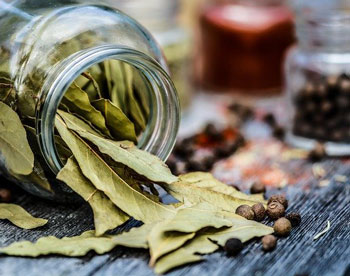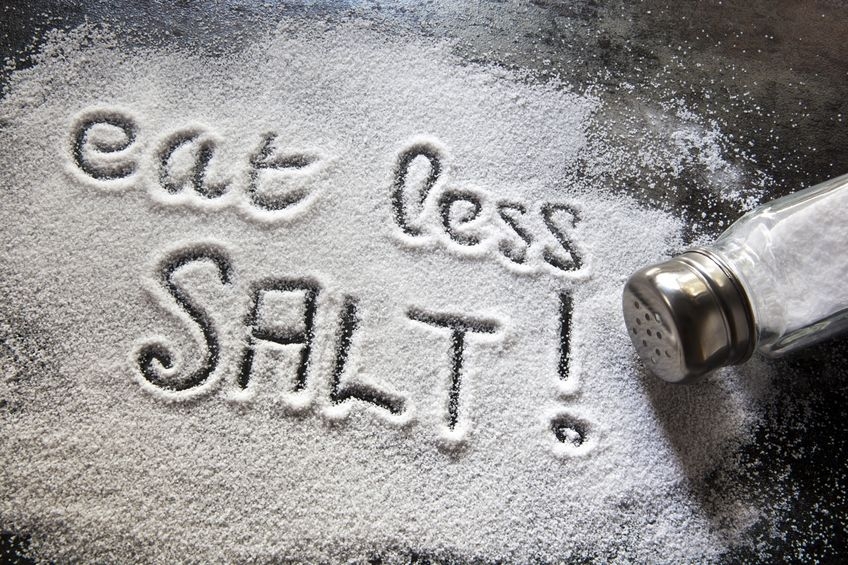Retrain Your Taste Buds Away from Salt
About 1 out of 3 adults, or 75 million people, in the United States has high blood pressure, which increases the risk for heart disease and stroke, the first and third leading causes of death. For many, one immediate change recommended is to begin eating healthy, including reducing the amount of sodium consumed.
Although salt is an acquired taste, you can retrain your taste buds to accept healthier choices.
Everyone needs some salt to function. Salt helps maintain the body’s balance of fluids. It also serves as a preservative in many foods by helping to prevent spoilage and keeping certain foods safe to eat. Unfortunately, nearly all Americans consume more salt than they need daily.
What are the dietary guidelines for sodium?
The dietary guidelines suggest that the general population consume no more than 2,300 milligrams of sodium a day, which is about equivalent to a teaspoon of table salt. For some, the recommendation is no more than 1,500 milligrams.
This includes those high risk populations such as African Americans, people with high blood pressure, and those who are middle-age or older. Always follow your doctor’s recommendation on how much sodium you can have daily.
So what happens when we consume more than the 2,300 milligrams salt that we need?
It can contribute to high blood pressure. High blood pressure makes the heart work harder and can lead to heart disease, stroke, heart failure and kidney disease.
The DASH Diet was developed to fight high blood pressure, not as an all-purpose diet plan. It received high marks for its nutritional completeness, safety, ability to prevent or control diabetes, and its role in supporting heart health. It’s widely considered a balanced dietary approach for anyone desiring to lose weight, help control high blood pressure and improve overall health.
Nutrients like potassium, calcium, protein, and fiber are crucial to managing high blood pressure. With the DASH Diet, you don’t have to track each one. Just emphasize the foods you’ve always been told to eat (fruits, vegetables, whole grains, lean protein and low-fat dairy), while limiting foods that are high in saturated fat, such as fatty meats, full-fat dairy foods, tropical oils, and sugar-sweetened beverages and sweets. The diet also emphasizes replacing salt and sodium with herbs and spices.
Eating a healthy diet can help you lower your salt intake.
Flavor with pepper and other herbs and spices instead of salt. Choose unsalted snacks. Ask for low salt or no salt at restaurants. More than 70 percent of the sodium we consume is found in processed foods and restaurant meals.
Depending on your food choices, it doesn’t take much to consume more sodium than recommended. One slice of bread can contain anywhere from 80 to 230 mg of sodium, and a slice of frozen pizza can contain between 370 and 730 mg. Some breakfast cereals contain 150 to 300 mg of sodium before milk is added. Sodium adds up quickly.
Cooking at home can help you better control your sodium.
 Use lemon juice and salt-free herbs and spices, such as garlic and pepper, to flavor
your food instead of sauces and prepackaged seasonings. Also limit added salt while
cooking, and taste food first before salting at the table.
Use lemon juice and salt-free herbs and spices, such as garlic and pepper, to flavor
your food instead of sauces and prepackaged seasonings. Also limit added salt while
cooking, and taste food first before salting at the table.
To learn more about cooking classes or how to reduce the salt in your diet, contact the Miller County Extension Office, 870-779-3609 or visit us in room 215 at the Miller County Courthouse. You can also contact your local county Extension Office. We have offices in all 75 counties!
This All-Purpose Blend is great sprinkled on protein foods and vegetables and is sodium free.
All-Purpose Blend
- 1 teaspoon celery seed
- 1 tablespoon basil
- 1 tablespoon marjoram
- 1 teaspoon onion powder
- 1 teaspoon thyme
- Mix together in a small mixing bowl.
- Store in an airtight container away from heat.
- Use 1 teaspoon per pound of protein food and one half teaspoon for 2 cups of vegetables.
By Carla Due
cdue@uada.edu
